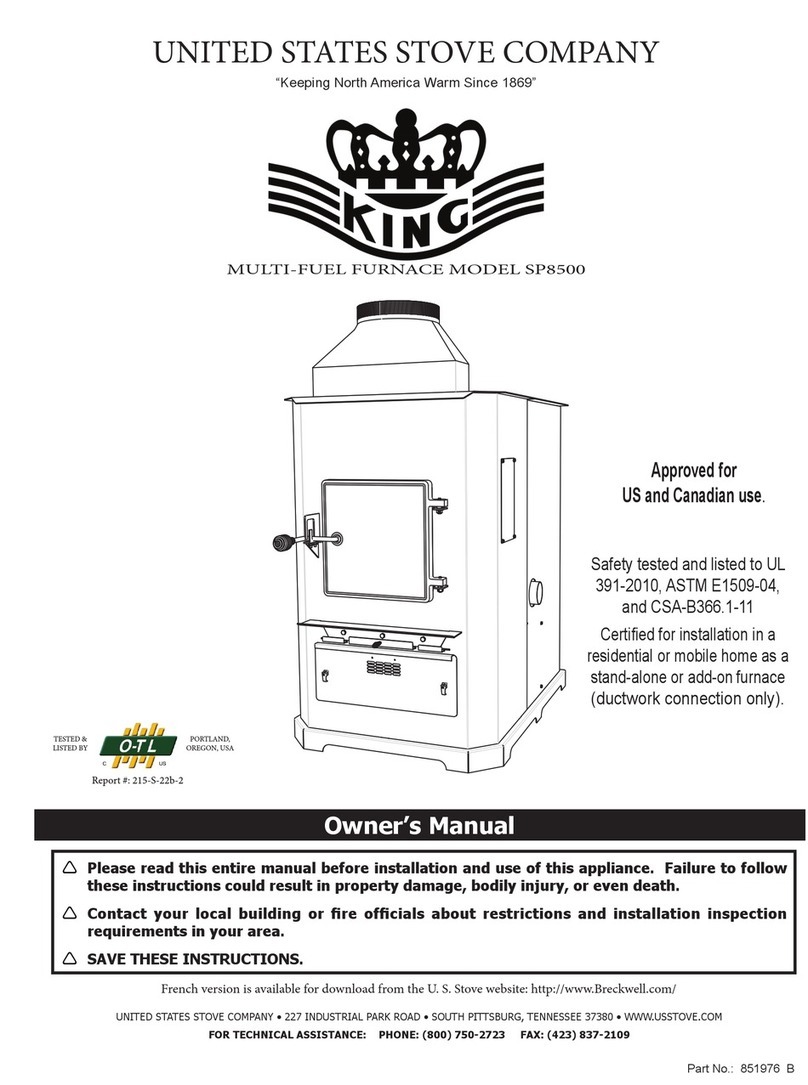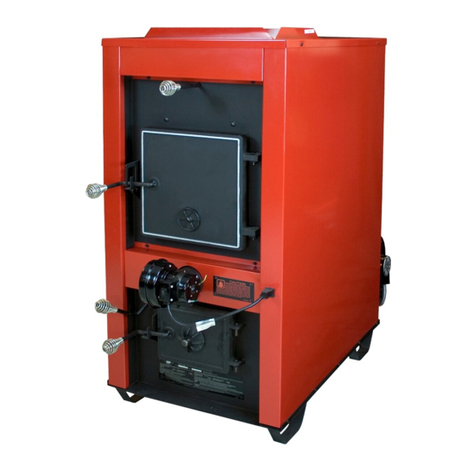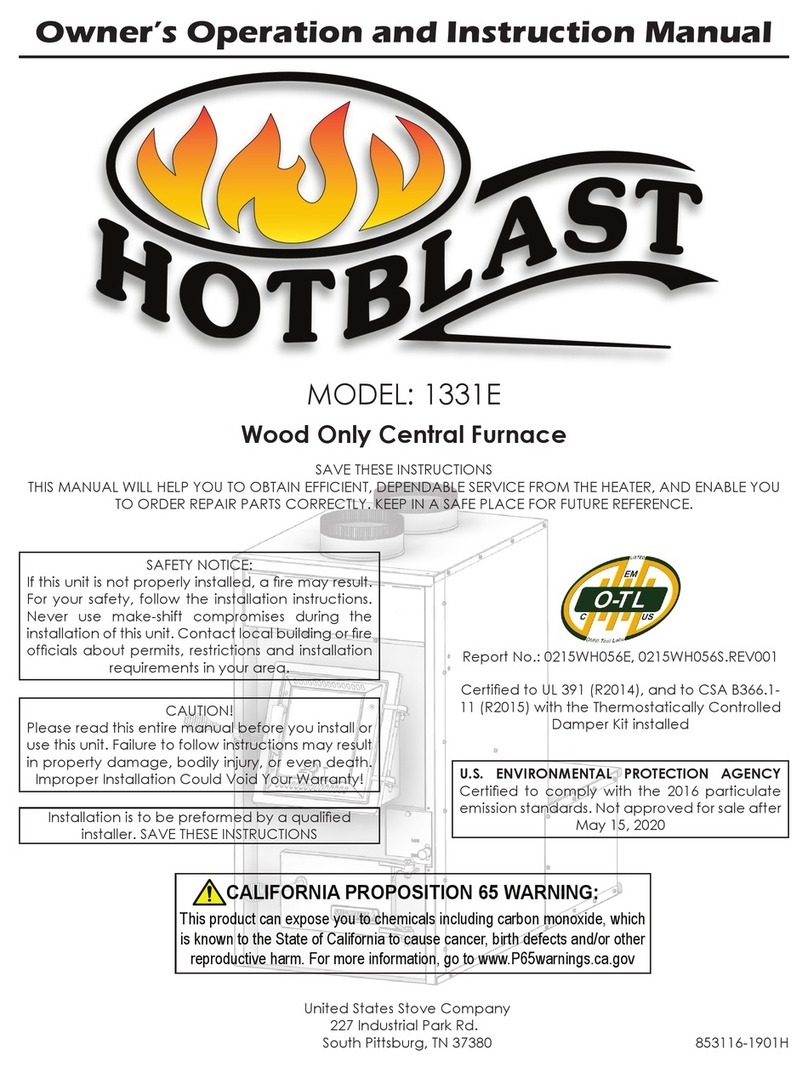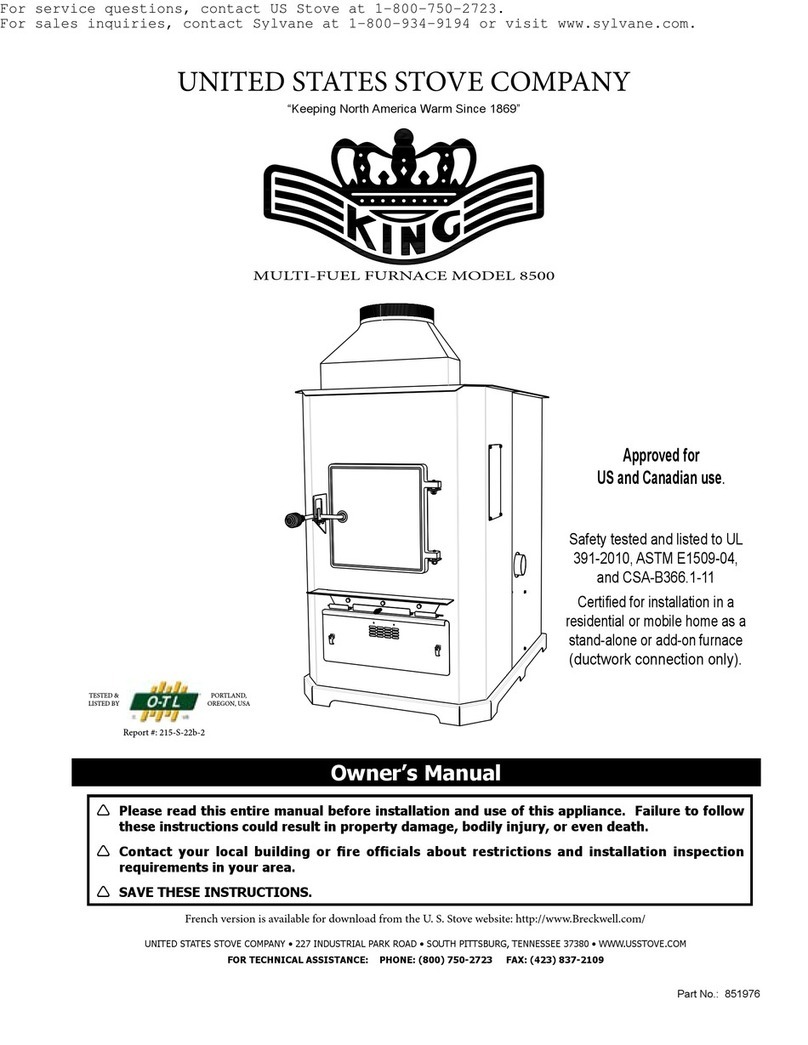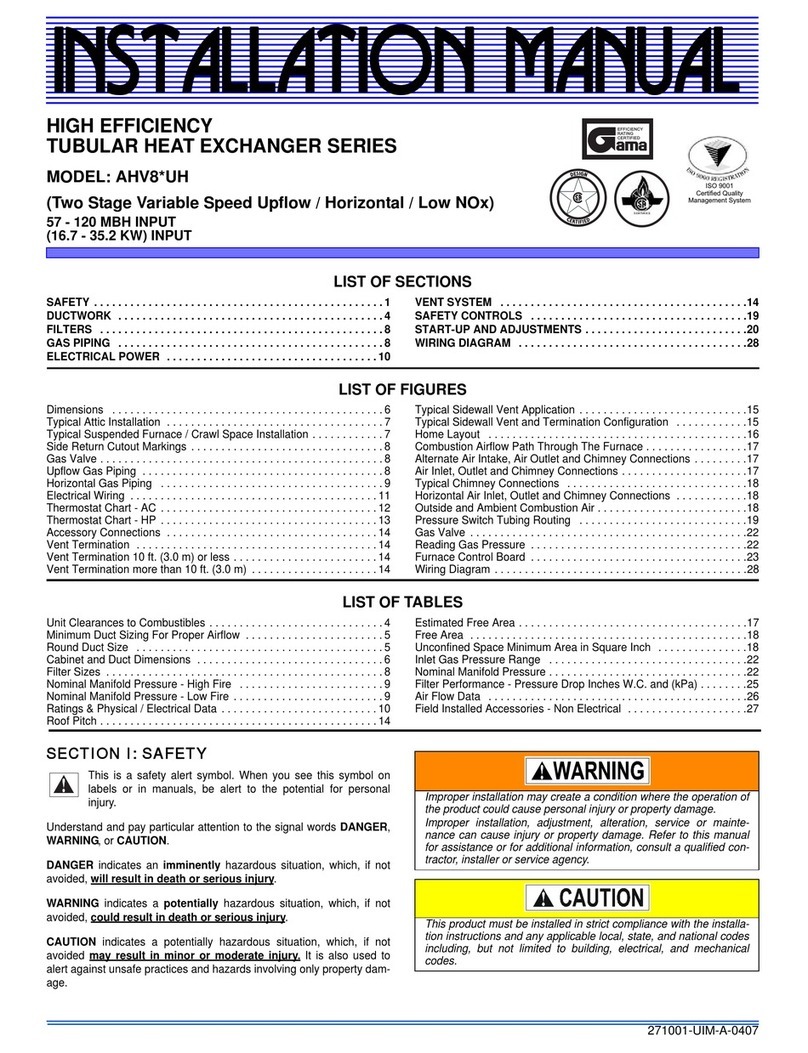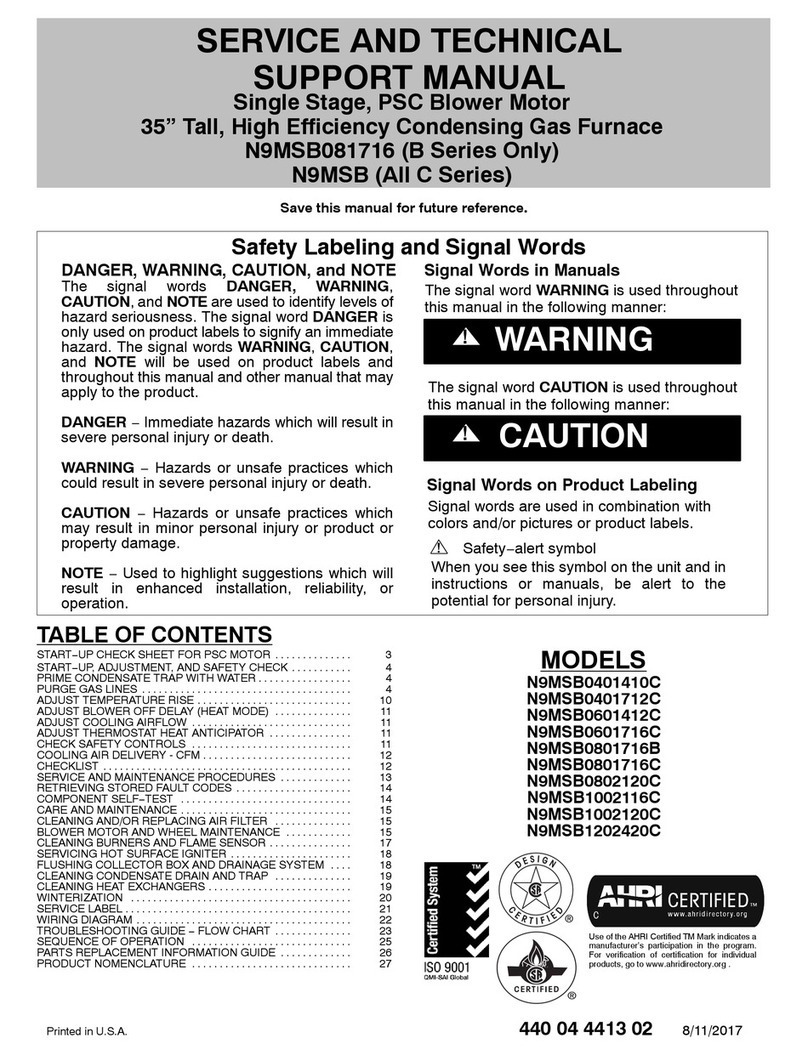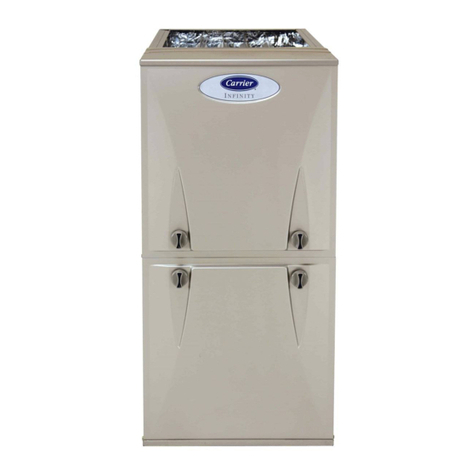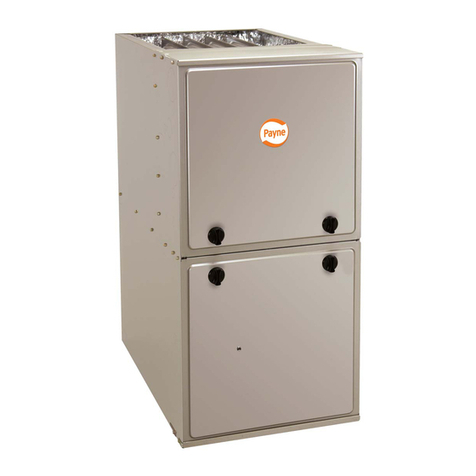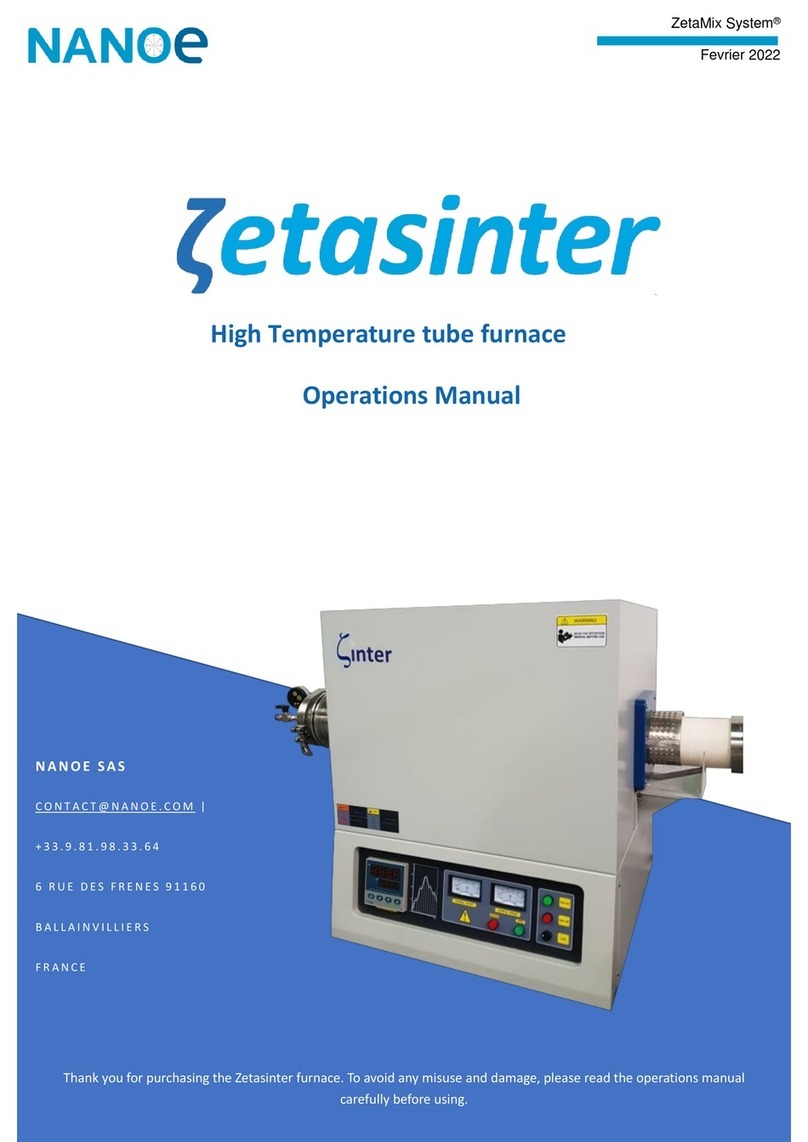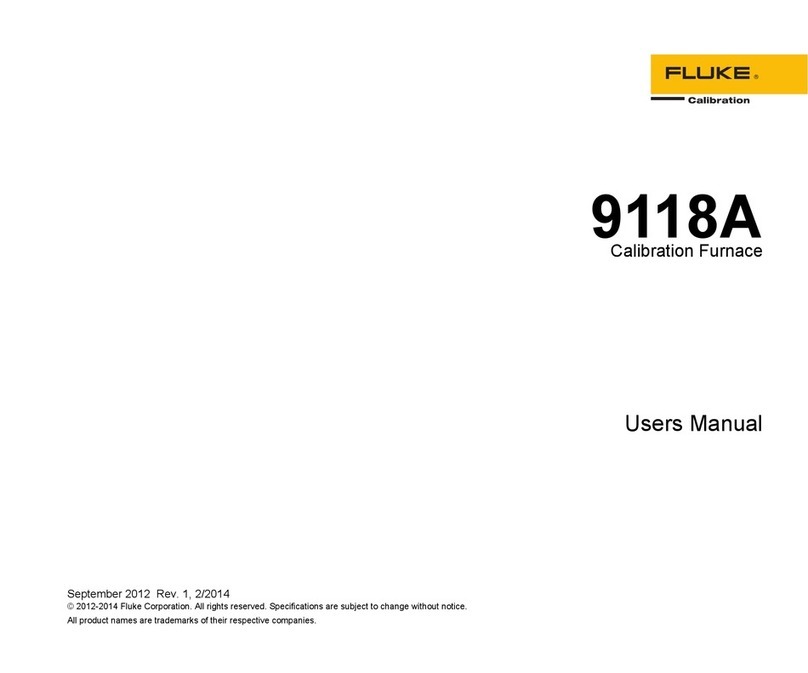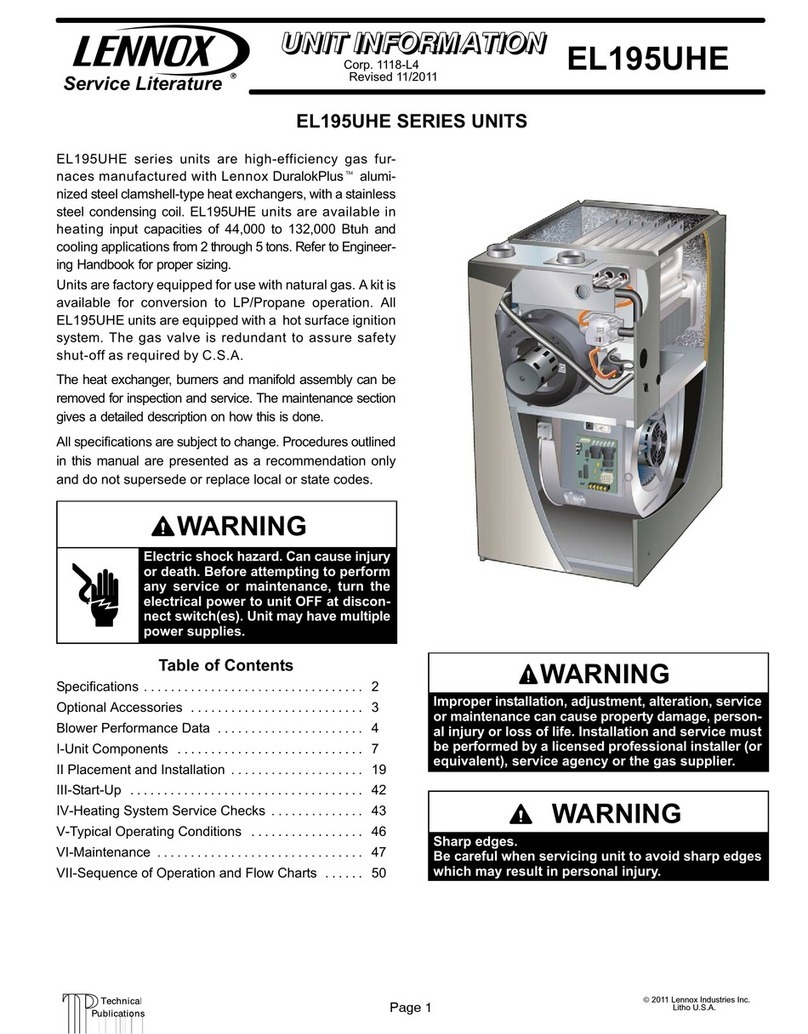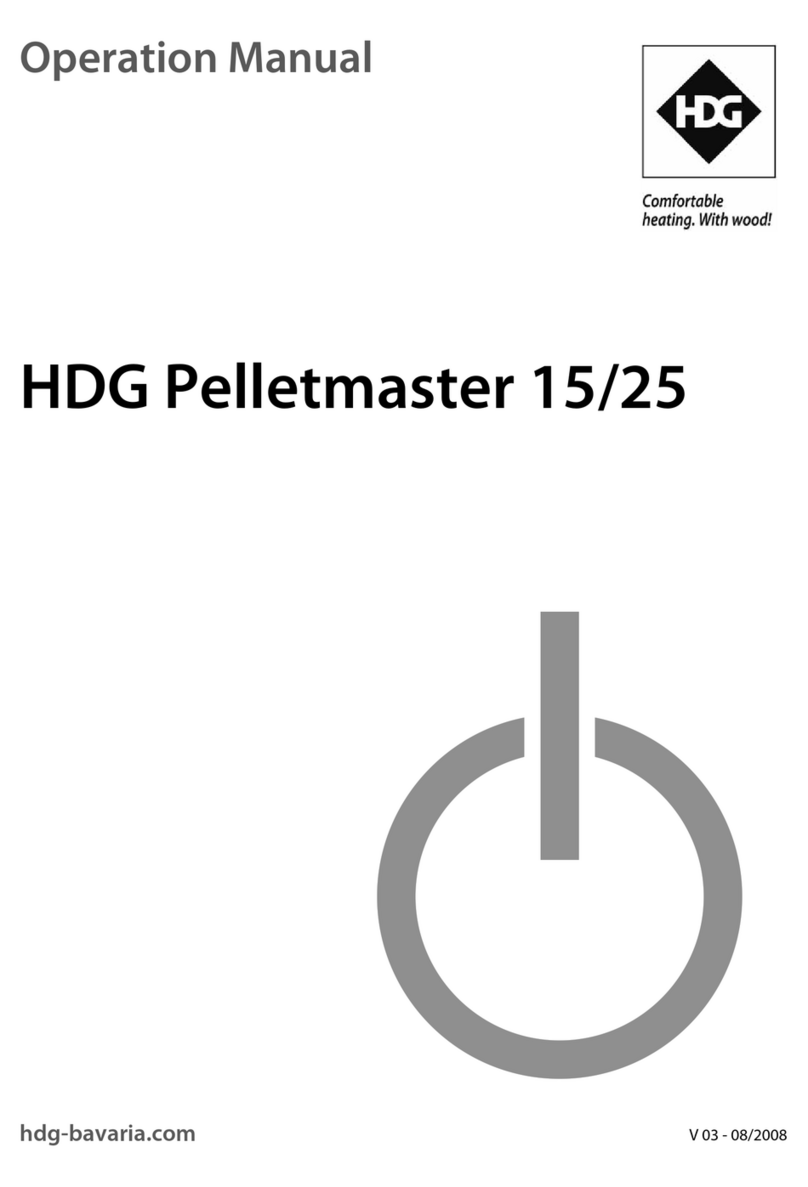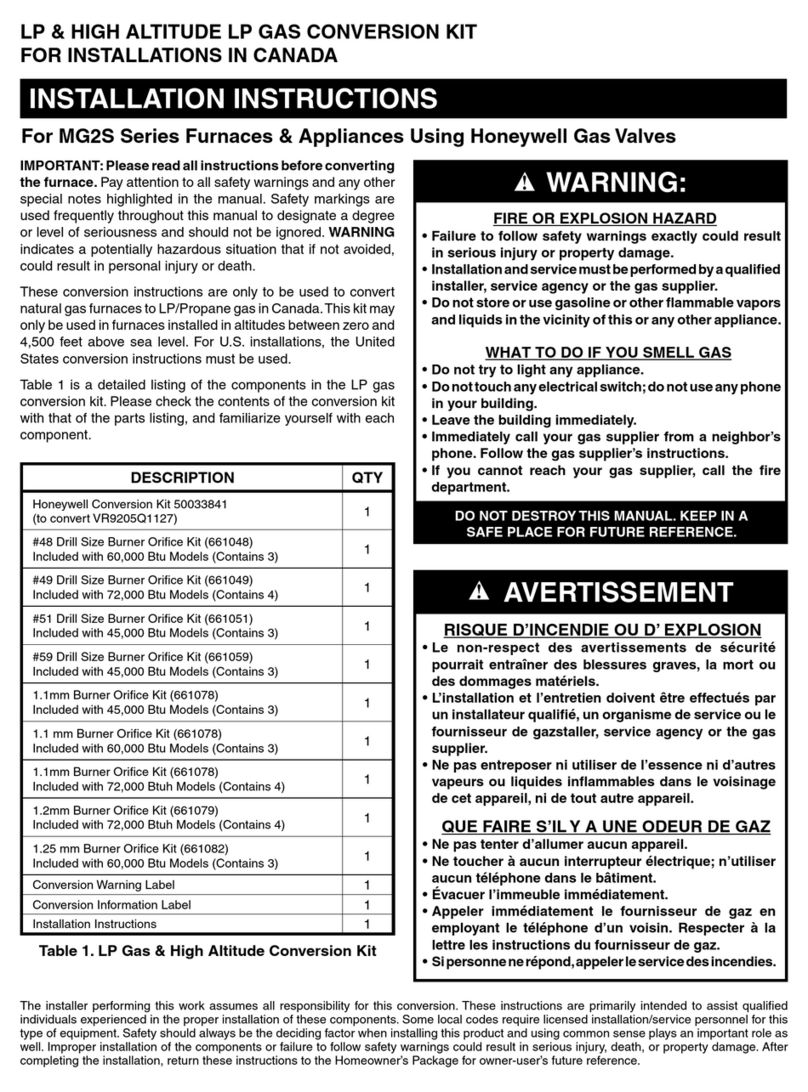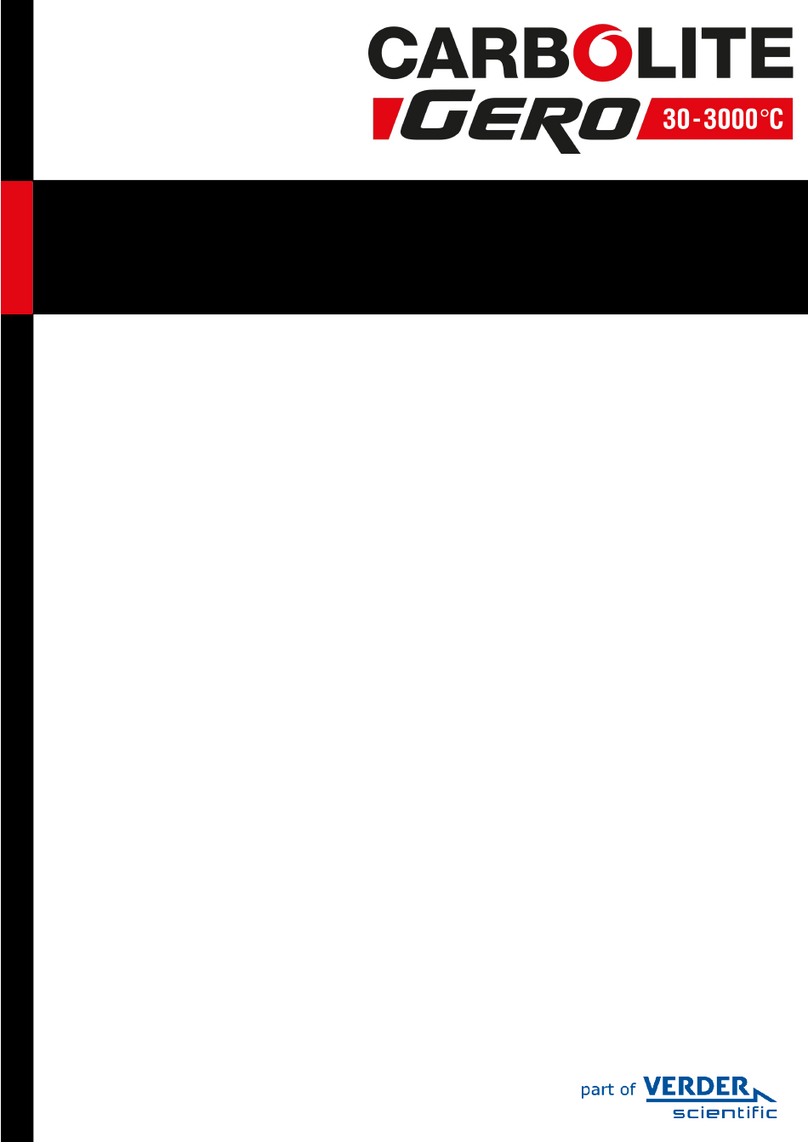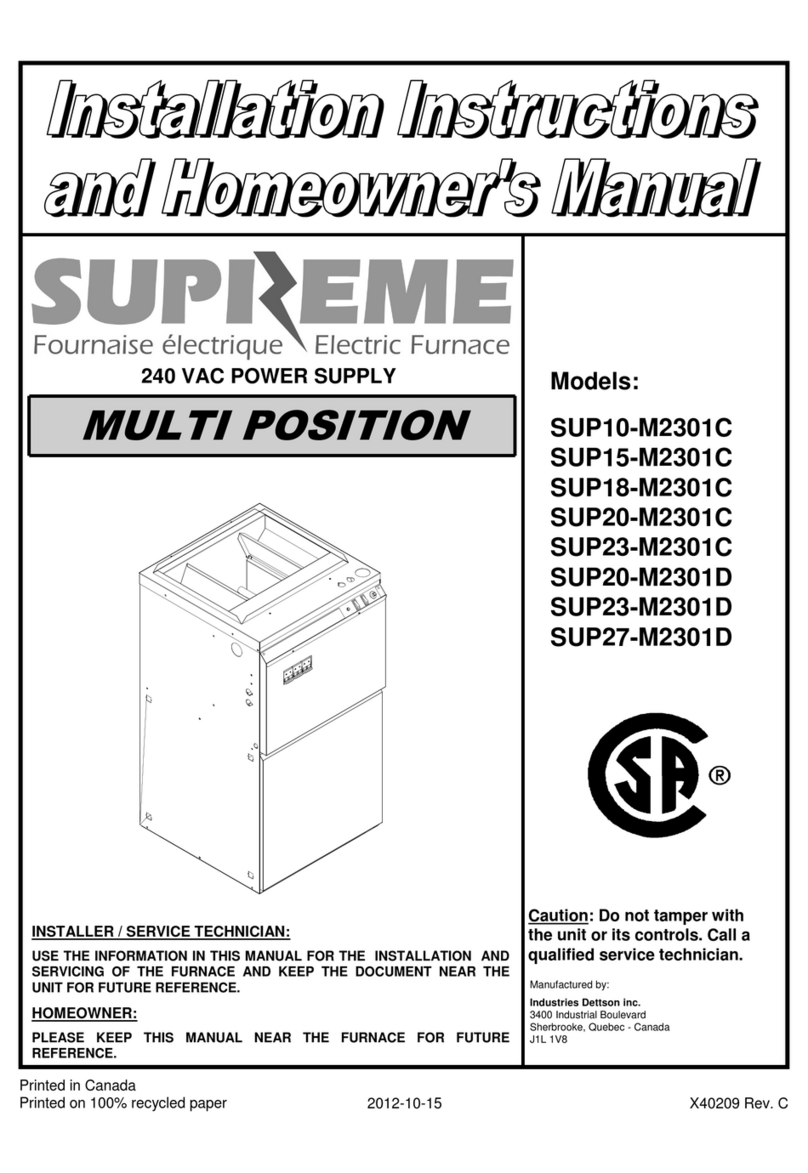
10
TESTING AND OPERATING PROCEDURES
FACTORY SETTING
120°F
125°F
130°F
135°F
140°F100°F
105°F
110°F
115°F
GENERAL FURNACE OPERATION
When you start a fire in the furnace and it reaches operat-
ing temperature, the blower(s) will come on automatically.
The snap-disc is adjustable from 100°F(A) to 140°F(E),
Each click on the switch is approximately 5°F. It comes
from the factory, set at 120°F, setting C. The rocker switch
on the top of the junction box gives you the option to run
one blower or two. If the switch is ON, both blowers will
come on when the snap-disc reaches the set temperature.
If the swithc is OFF, only one blower will operate.When the
furnace temperature drops approximately 20°F below the
snap-disc setting, the blower(s) will shut off.
FUEL SELECTION
The top down method of fire building is recommended for
this appliance. After making sure that the stove air intake
controls are fully open (completely pull-out towards you),
Place the largest pieces of wood on the bottom, laid in
parallel and close together. Smaller pieces are placed in
a second layer, crossways to the first. A third layer of still
smaller pieces is laid crossways to the second, this time
with some spaces between. Then a fourth layer of loose,
small kindling and twisted newspaper sheets tops off the
pile.
Higher efficiencies and lower emissions generally result
when burning air dried seasoned hardwoods, as com-
pared to softwoods or to green or freshly cut hardwoods.
DO NOT BURN:
1. Garbage;
2. Lawn clippings or yard waste;
3. Materials containing rubber, including tires;
4. Materials containing plastic;
5. Waste petroleum products, paints or paint thinners, or
asphalt products;
6. Materials containing asbestos;
7. Construction or demolition debris;
8. Railroad ties or pressure-treated wood;
9. Manure or animal remains;
10. Salt water driftwood or other previously salt water sat-
urated materials;
11. Unseasoned wood; or
12. Paper products, cardboard, plywood, or particleboard.
The prohibition against burning these materials does
not prohibit the use of fire starters made from paper,
cardboard, saw dust, wax and similar substances for
the purpose of starting a fire in an affected wood heat-
er.
Burning these materials may result in release of toxic
fumes or render the heater ineffective and cause smoke.
Dead wood lying on the forest floor should be considered
wet, and requires full seasoning time. Standing dead wood
can usually be considered to be about 2/3 seasoned. Split-
ting and stacking wood before it is stored accelerates dry-
ing time. Storing wood on an elevated surface from the
ground and under a cover or covered area from rain or
snow also accelerates drying time. A good indicator if
wood is ready to burn is to check the piece ends. If there
are cracks radiating in all directions from the center then
the wood should be dry enough to burn. If your wood siz-
zles in the fire, even though the surface is dry, it may not
be fully cured, and should be seasoned longer
STARTING A WOOD FIRE
CAUTION: Never use gasoline, gasoline-type lantern fuel,
kerosene, charcoal lighter fluid, or similar liquids to start or
“freshen up” a fire in the furnace. Keep all such liquids well
away from the furnace while it is in use.
CAUTION: To prevent flame and smoke spillage, the slide
baffle must be pulled out and the fuel door must be cracked
for ten seconds before being fully opened.
Do not over fire your furnace! After you have become fa-
miliar with its operating, you should know how much wood
to use.
1. Open spin draft cap on ash door.
2. Pull the slide baffle rod to the front position.
3. Open the fuel load door and light fire using kindling
and several sheets of newspaper, then close the fur-
nace door. The furnace door should remain closed for
5 to 10 minutes in order to establish the fire. If the fire
has established, you are ready to load the furnace.
4. Load the furnace, close the load door and push the
slide Baffle rod to rear.
5. Close the spin draft cap on ash door, leaving it cracked
about the diameter of a dime.
6. Adjust the spin draft cap on the intake just below the
feed door to allow sufficient combustion air into the
firebox. This setting may increase or decrease de-
pending on the fuel being used and it’s moisture con-
tent.
